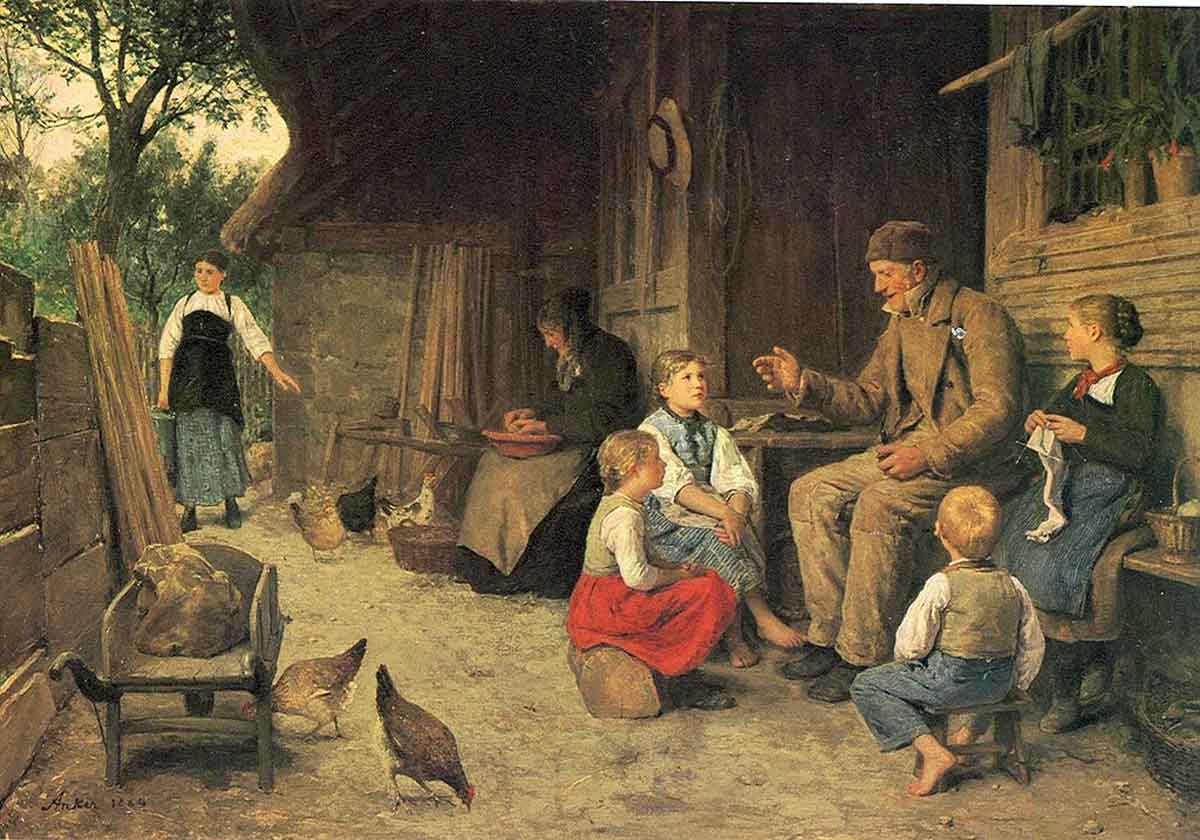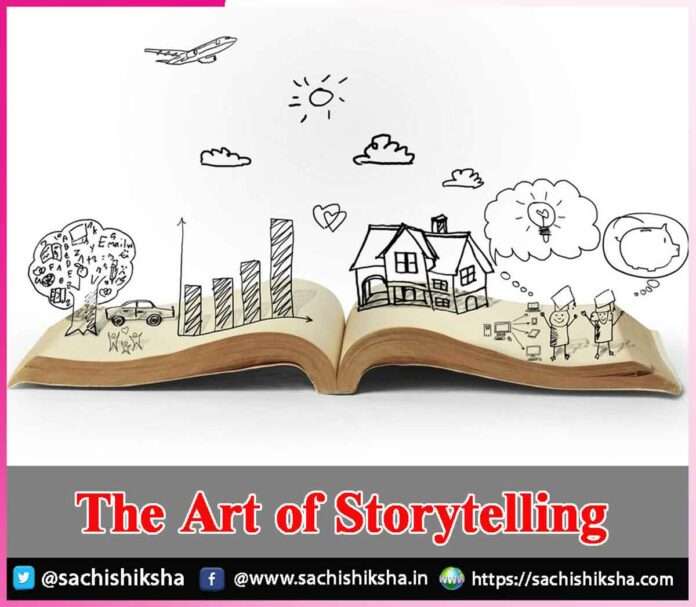The Art of Storytelling
Introduction: Storytelling is an ancient art, a thread that weaves through the tapestry of human culture, connecting individuals across time and space. From the flickering flames of campfires to the dazzling screens of cinemas, stories have been the vessels through which we communicate, empathize, and understand the complexities of the human experience.
In exploring the art of storytelling, we delve into its intricate components, understanding how characters, plot, setting, theme, point of view, conflict, resolution, pacing, dialogue, symbolism, and audience engagement contribute to the magic of narrative creation.
Table of Contents
Characters: The Beating Heart of Narratives

Character development is the alchemy of transforming words on a page into living, breathing beings. A well-developed protagonist is not just a hero; he is a vessel for the audience to experience transformation, growth, and triumph. Supporting characters, too, play a crucial role, adding depth and richness to the narrative tapestry.
Relatability is the key to unlocking the audience’s emotional investment in characters. Whether through shared experiences, struggles, or aspirations, characters that resonate with the audience, personally create a powerful connection, fostering empathy and engagement.
Plot: The Narrative Blueprint
The plot is the architectural framework upon which a story is built. The three-act structure, a cornerstone of storytelling, provides a roadmap for introducing characters, escalating conflict, and ultimately reaching resolution. It is a guide that lends order to the chaos of storytelling.
Conflict is the driving force that propels the plot forward. Whether internal or external, the challenges characters face create tension, drawing the audience deeper into the narrative. Conflict is the crucible in which characters are tested, revealing their true nature and driving the evolution of the story.
Resolution is the narrative equilibrium when loose ends are tied, questions are answered, and characters find closure. A well-crafted resolution is not merely an ending but the journey’s culmination, leaving the audience with fulfillment and satisfaction.
Setting: The Canvas of Imagination
The setting is more than a backdrop; it is the canvas upon which the story is painted. A practical setting transcends the physical and becomes a dynamic force influencing characters and the plot. World-building is creating a vivid, immersive setting that complements the narrative.
World-building extends beyond physical landscapes to encompass cultural, historical, and societal elements. The rules of the story world, its customs, and its peculiarities add complexity, enhancing the audience’s suspension of disbelief. A well-crafted setting is a silent collaborator in the storytelling process.
Theme: The Thread That Connects
Themes are the unifying threads that tie a narrative together. They are the overarching ideas or messages that resonate with the audience, exploring universal truths about the human condition. The art of storytelling involves the careful exploration and integration of themes that add depth and meaning to the narrative.
Themes can be overt or subtle, addressing love, loss, power, identity, and morality. They provide a lens through which the audience can interpret the story’s events, creating a cohesive and resonant experience.
Point of View: Narrative Perspective
Point of view (POV) is the lens through which the audience experiences the story. Each POV offers a unique vantage point, whether first-person, third-person, or omniscient.
First-person narration provides an intimate connection, allowing the audience to delve into a character’s inner thoughts and emotions. Third-person narration offers a broader perspective, showcasing multiple characters and plotlines. Omniscient narration, with its all-knowing viewpoint, provides insight into the minds of characters and the world at large.
Conflict and Resolution: Tension and Release
Tension is the heartbeat of storytelling. It keeps the viewers interested and motivated to uncover the next twist or turn in the narrative. Whether internal or external, conflict is the catalyst for tension, driving the story forward.
The resolution provides the release, offering closure and satisfaction. However, not all tension needs immediate resolution. Subplots and lingering questions can strategically be left unresolved, inviting anticipation for future developments.
Pacing: The Rhythm of Narrative Flow
Pacing is the rhythm that governs the flow of a story. It determines the speed at which events unfold, balancing moments of intensity with periods of reflection. Effective pacing maintains the audience’s engagement without overwhelming them.
Well-paced stories know when to accelerate during high-stakes moments and when to decelerate for character development or introspection. Pacing is not just about speed; it’s about strategically placing peaks and valleys in the narrative arc.
Dialogue: The Art of Verbal Choreography
Dialogue is the spoken dance of storytelling. It serves multiple functions, from advancing the plot to revealing character traits. Genuine conversation reflects the subtleties of interpersonal communication, making characters feel real and relatable.
Each character should have a distinct voice shaped by their background, personality, and experiences. Dialogue should be natural, flowing authentically to enhance the overall cohesion of the narrative. Subtext, the unspoken layer beneath dialogue, adds depth, allowing characters to convey hidden motives or emotions.
Symbolism and Imagery: Beyond the Literal
Symbolism and imagery elevate storytelling from the literal to the symbolic. Metaphors, allegories, and visual symbols add layers of meaning, inviting the audience to engage with the narrative on a deeper level.
Metaphors and symbols serve as bridges between the tangible and the abstract. Visual language, painting vivid pictures with words, enhances the audience’s immersion in the story world. Well-crafted imagery appeals to the senses, creating a sensory experience that lingers in the audience’s minds.
Twists and Surprises: The Art of Unpredictability
Twists and surprises inject an element of unpredictability into the narrative, challenging audience expectations and keeping them on the edge of their seats. Well-executed twists are surprising yet logical within the context of the story.
Setup is crucial for the success of twists. Foreshadowing and subtle hints prepare the audience for the eventual revelation without giving away the surprise too early. The art lies in finding the right balance and introducing twists that enhance the narrative without sacrificing coherence.
Emotional Resonance: Connecting Hearts and Minds
Emotional resonance is the currency of storytelling. Empathy is the bridge that connects the audience to the characters and the narrative. Themes that resonate on a human level contribute to emotional resonance, creating narratives that linger in the hearts and minds of the audience.
Audience Engagement: The Dance of Connection
From the opening lines to the closing scene, audience engagement is a delicate dance between storyteller and spectator. The art lies in captivating the audience’s attention, sustaining their interest, and leaving a lasting impact.
The hook is the initial grabber that entices audiences into the story. Suspense, created through the strategic withholding information, keeps spectators glued to the screen. Relevance to the audience, both culturally and emotionally, ensures that stories resonate and leave a lasting impression.
Craftsmanship: Editing and Revision
Craftsmanship is the refinement process that transforms a raw narrative into a polished masterpiece. Editing involves trimming excess, refining language, and enhancing overall cohesion. Revision is the iterative process of reimagining and reworking the narrative, ensuring each element contributes to the story’s resonance.
Conclusion:
Storytelling is a nuanced dance of creativity, empathy, and meticulous craftsmanship. Storytellers create worlds that captivate, entertain, and illuminate through the alchemy of characters, plot, setting, theme, point of view, conflict, resolution, pacing, dialogue, symbolism, and audience engagement. It is an enduring art form that continues to evolve, adapting to new media and technologies, yet always rooted in the timeless desire to share, connect, and understand the human experience.
















































